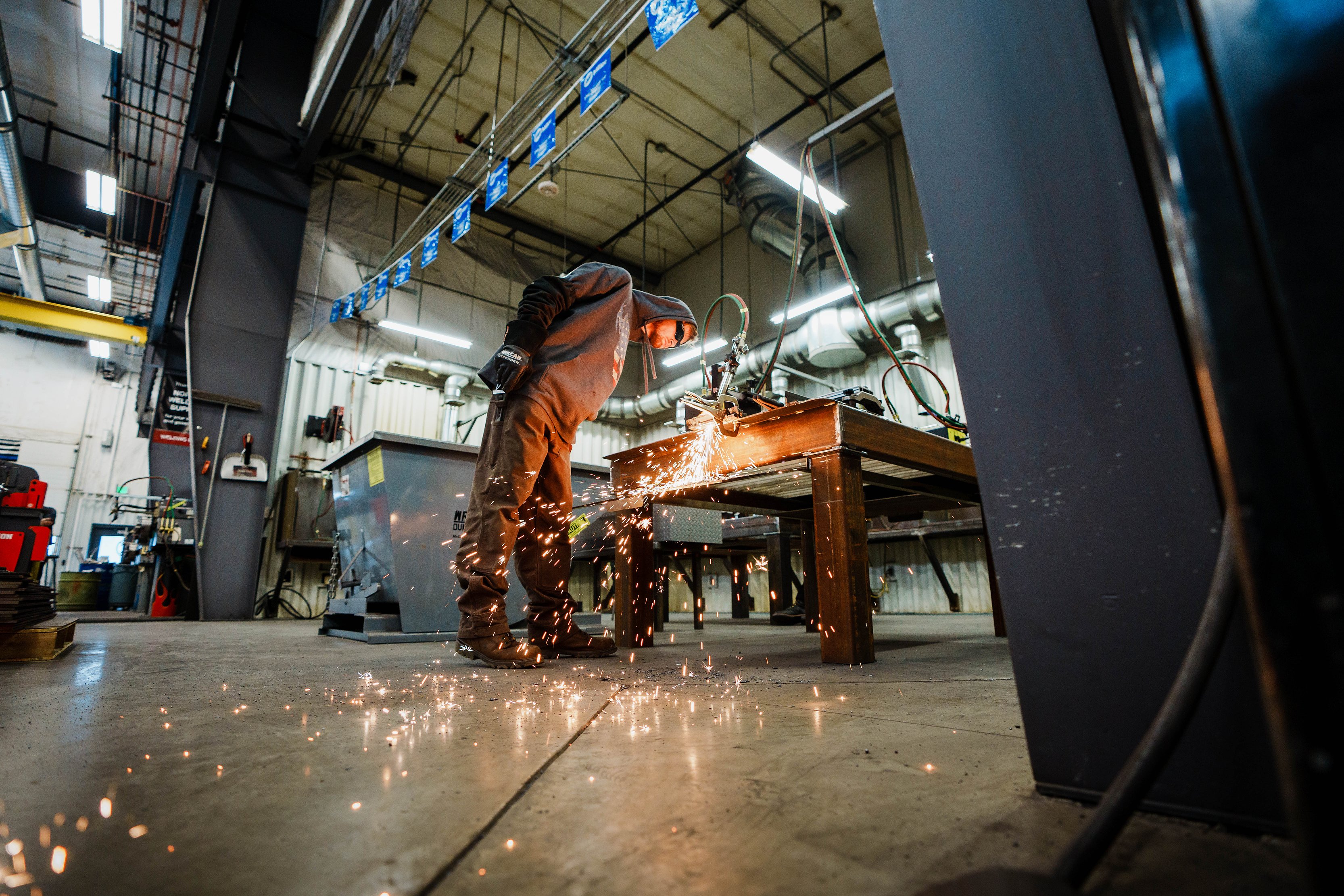In North Idaho, skilled workers are in demand
The demand for skilled labor in North Idaho is high.
Some of the highest projected employment growth in the region is driven by occupations in health care, construction, personal care and services, as well as transportation and material moving.
These occupations made up 35% of total job postings in North Idaho over the last year while accounting for 25-30% of regional employment, according to Lisa Grigg, Idaho Department of Labor economist for north-central Idaho.
"Between 2022-2032, total occupational employment in northern Idaho is expected to increase by 13,000 jobs and all of these sectors have a faster projected growth rate than the overall economy," Grigg said Thursday. "Over the next 10 years, employment may realistically increase more than 20% for health care and personal care occupations and may exceed 15% for construction and transportation occupations."
Some skilled occupations that have shown consistent growth over the last two years include:
• Construction: Growth for brick masons, cement/concrete finishers, plumbers and electricians — while declines are present in carpenters, tile/stone setters, paving equipment operators and drywall installers
• Installation, maintenance and repair: Growth for machinery maintenance workers, millwrights and electrical power line installers — offset by declines in automotive repair; diesel mechanics; RV technicians; heating, ventilation and air conditioning specialists; home appliance repairers; and telecom installers/repairers
• Sales and related jobs: Growth in insurance sales agents and real estate agents — offset by declines in general sales representatives
Is North Idaho keeping up with the need for people to fill these skilled job positions?
"Although there is strong employer demand and elevated job postings, many of these occupations have most recently experienced declines in total employment as separations have exceeded hirings," Grigg said.
In October 2023, Gov. Brad Little's Idaho LAUNCH grant program began taking applications. Idaho LAUNCH encourages students to pursue in-demand careers by providing up to $8,000 over two years for those who go into worker-hungry industries.
LAUNCH, which is available to youth 16-24 as well as adults, has proven to be a wildly popular program. However, according to Grigg, 45% of Idaho LAUNCH in-demand occupations had lower employment in the northern region in 2023 than in 2021.
"The combination of high population growth over the last few years into the northern region together with a high percentage of workers in these skilled trades either at or near retirement is likely to create shortages in these occupations for the foreseeable future," Grigg said. "Unfortunately, this trend is not unique to northern Idaho as a national shortage is resulting in high competition for skilled workers."
One major challenge for skilled trades is finding instructors to train the next generation, she said.
"I have talked to both electricians and telecommunications companies that have pointed out that their biggest obstacle at the moment is not attracting new recruits, but actually having the staffing available to onboard and professionally train the new hires to a competent point," Grigg said.
Who is training the next generation of workers?
In an empty automotive technology classroom at Kootenai Technical Education Campus, TJ Robertson and John Mackesy put the finishing touches on a vehicle that students had done work on but not quite completed before the end of the school year.
Diesel instructor Mackesy worked in the auto industry for 30 years before bringing his firsthand knowledge to KTEC. He said at KTEC, much of the education is tailored to conversations they have with local industry representatives, both small, independent shops and large dealerships with a nationwide presence.
Robertson, auto instructor, said he feels North Idaho is doing well with producing workers, but "obviously, we could do better."
"Industry needs a lot more,” he said. "With who's retiring right now and changing careers, all industries need more. It’s just finding the volume of ones that fit into each industry partner.”
North Idaho College is another valuable resource for North Idaho's talent pool. NIC closely works with business and industry leaders to ensure its educational programs align with local labor markets, said Vicki Isakson, NIC's dean of instruction for workforce education. This collaboration benefits NIC students by preparing them for high-demand positions with the potential for career and educational advancement.
“Community colleges play a crucial role in strengthening the middle class,” Isakson said. "A key aspect of NIC’s mission is that the college’s programs be accessible and affordable while meeting the community’s needs. This enables anyone to earn a degree or certification and get a job that promotes upward mobility, enhances their quality of life and builds up the local economy.”
The NIC Parker Technical Education Center offers two-year degree and technical certificate programs. Welding, automotive technology and diesel technology are the center’s more popular programs.
Many of NIC’s technical programs with higher enrollment numbers can be found on the list of in-demand skilled trades training programs eligible for funding through the Idaho LAUNCH program. This includes the NIC Workforce Training Center’s trades apprenticeship programs in electrical, plumbing and HVAC.
This past school year, the center had 847 students enrolled in four-year, registered apprenticeship programs that teach the skills of a trade through a combination of on-the-job training and related classroom instruction at the NIC Workforce Training Center. With the on-the-job training component, apprenticeship students are all working with local employers, usually 40 hours per week, so they are earning while they work toward receiving their journeyman certification.
Worth the work?
In 2007, Kootenai County had nearly 6,000 construction workers. That fell to 3,300 in 2011.
"We didn’t even get back to the 2007 level of employment again in Kootenai County until 2019 — and have surpassed it every year since then, reaching 7,300 in 2023," Grigg said. "To put it in perspective, Kootenai County has added 2,000 construction jobs in the last five years but only sits at 1,400 jobs above the level it was at in 2007.
The trade jobs that are most difficult to fill are those with nontraditional schedules or time away from home such as heavy truck drivers, construction labor, forestry workers, firefighters/police officers and EMS/paramedics.
More than 80% of occupations that require moderate to long-term on-the-job training or apprenticeships pay average hourly wages above $20 per hour, with about a quarter of skilled trades having average hourly wages above $30 an hour, Grigg reported. Average hourly earnings for all occupations in North Idaho are estimated at about $26 per hour.
The demand for skilled trades is not likely to decrease, Grigg said. Current hiring rates are maintaining employment levels for some occupations, but lagging in others. The number of people in the labor force approaching retirement is larger than those entering the labor force for the first time, so an imbalance will continue in the labor market overall.
"The way to increase employment in these skilled trade occupations in Idaho is to pay living wages, increase exposure, broaden training opportunities and reduce financial barriers," she said. "These are all objectives of the Idaho LAUNCH program, but only time will tell if it is enough to offset employee demand from not only other occupations within Idaho, but other states competing for these learned skills as well."







